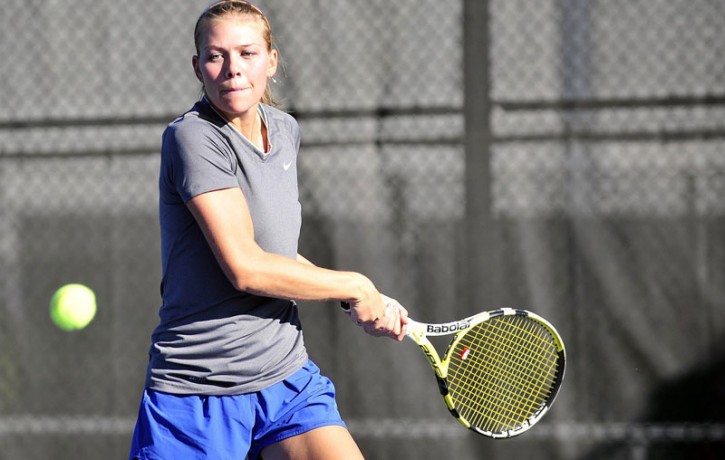Tennis and Manual Therapy

When I initially Googled: “Tennis and Manual therapy” I was inundated with sites for Lateral epicondylitis otherwise known as Tennis Elbow.
My first thought was “That can’t be it, Surely”? Is that all the interweb has to offer on Tennis injuries? My experience of patients that play regularly demonstrate neck and shoulder pain as well as lower limb injury above tennis elbow.
The title itself is misleading, I have actually seen more presentations of tennis elbow in patients that don’t play tennis than in those that do. It’s typical though, with the way that society needs a reason why physical conditions develop. “Swimmers shoulder” and “Runners knee” are two more such diagnoses that hold very little weight medically.
It’s got more to do with the loading through the muscles of the forearm that attach to the lateral epicondyle ( The outside of the elbow, when the palm of the hand is facing forwards). Lateral epicondylitis means by definition, inflammation ( any word with the suffix “itis” means inflammation of that tissue) of the lateral epicondyle.
A 1999 scientific paper in the Journal of Shoulder And Elbow Surgery questioned the existence of inflammation in chronic cases of epicondylitis. This brings in to doubt the appropriateness of the term epicondylitis for this condition. and these studies have gone on from there, consistently finding that there are no inflammatory cells around the area of pain. It is now becoming more common to hear the terms epicondylalgia ( “algia” meaning pain ) or epicondylopathy ( “opathy” meaning something wrong with it) in medical studies as the scientific and medical worlds catch on.
For anyone suffering elbow pain, whether you play tennis or not, it is important not to ignore mild symptoms and dismiss them as something that will go away on their own. They may well do, but there is always the risk of it developing into something worse if ignored.
If in doubt, always find a reputable Sports Therapist, Osteopath or Physical Therapist who can diagnose the problem, rule out any risk factors for future injury and offer best advice on how to deal with the current pain.
I guarantee you will spend less money doing this as soon as possible rather than waiting for further injury and needing more sessions to undo all the mechanisms that the body has implemented to compensate for the primary injury.
We all suffer aches and pains, but it is understanding why we do that reduces the threat involved. The higher the threat, the more reactive the nervous system is in producing pain, and as such if you do not understand why something is causing symptoms, pain will feel more intense than if you can predict an outcome where the injury heals and pain is removed.
If you would like to discuss sports injury therapy or manual therapy with a trained professional, please contact The Body Matters on 01702 714 968 for further help or advice.
- Finding Hope and Comfort Through Pain - 21st March 2025
- Non-Pharmacological Solutions for Managing Pain in Parkinson’s - 19th February 2025
- The Healing Touch: How Massage Benefits People with Spinal Injury Pain - 28th January 2025
